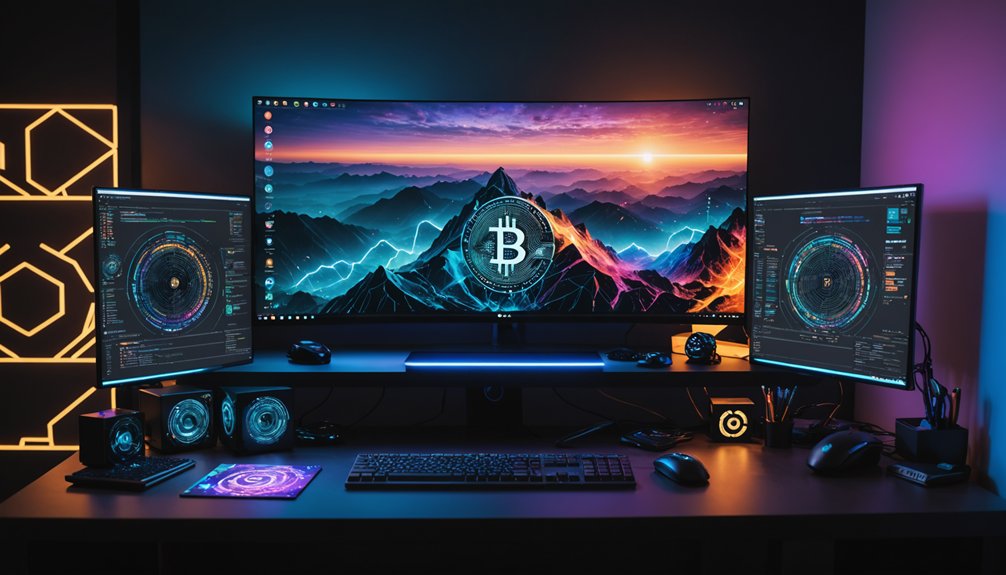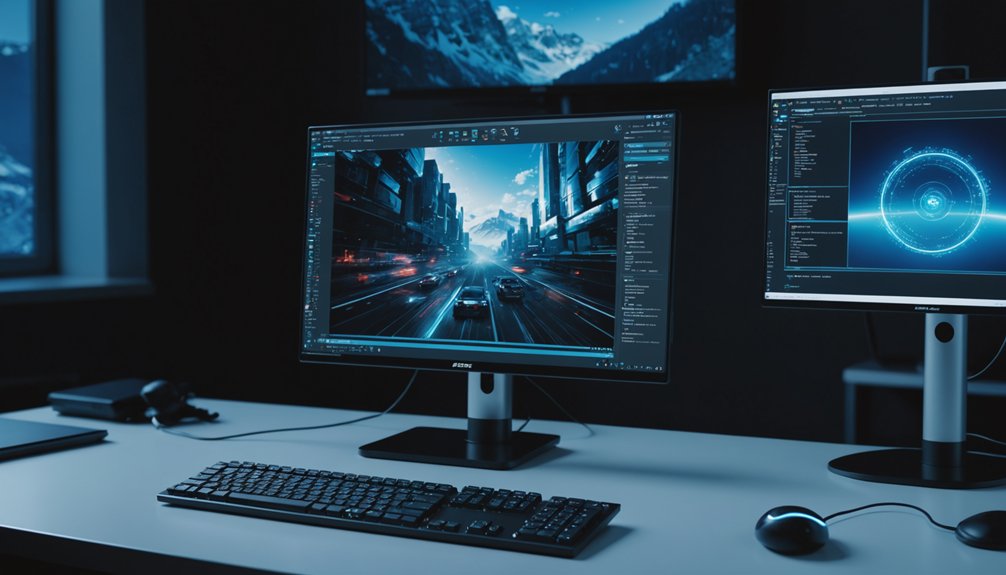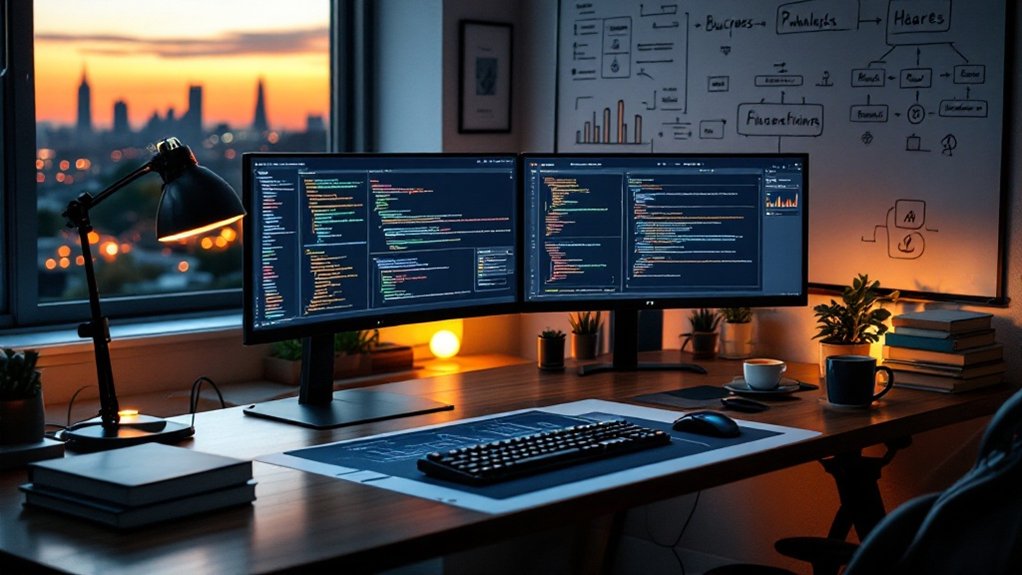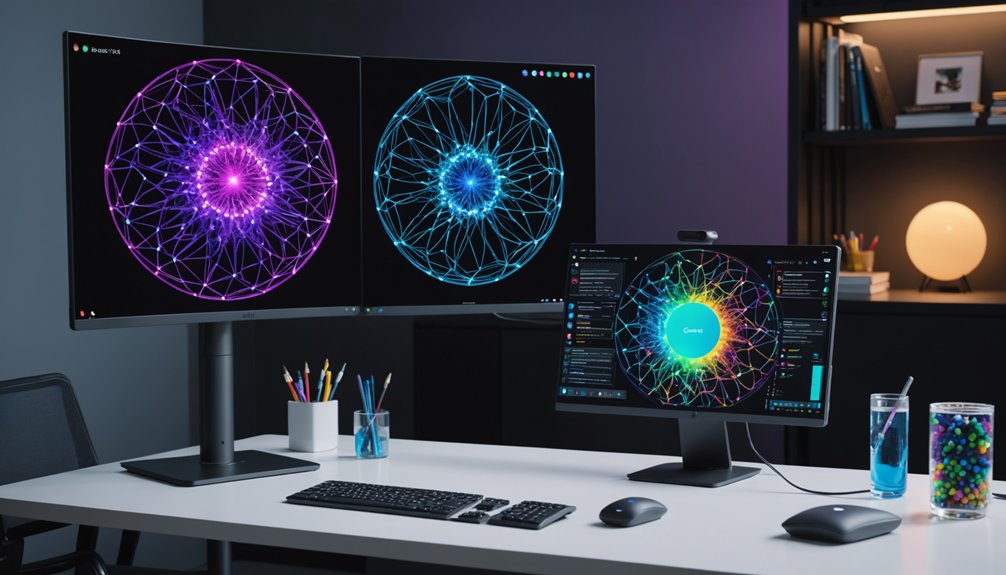Stable Diffusion turns text prompts into stunning AI artwork without artistic skills. Released in 2022, this model refines noise into coherent images. Users need decent hardware (GPU recommended) or can access online platforms like Hugging Face. Simple prompts yield basic results; detailed descriptions create impressive images. Advanced techniques include ControlNet for reference poses and regional prompting for targeted changes. The ethical debate around AI art ownership continues to simmer beneath the algorithmic surface.

Diving into the world of AI art creation has never been more accessible. Stable Diffusion, a latent diffusion model released in 2022, has revolutionized how people create digital art. It generates everything from photorealistic images to stylized artwork based on text prompts. No artistic skill required. Just words and a computer.
The system works by starting with pure noise and gradually refining it into coherent images. Pretty magical, really. Neural networks do the heavy lifting, trained on massive datasets of images and styles. The process resembles a digital sculptor carefully removing noise to reveal the intended image, much like revealing art from marble. The computer literally learns what "stormy landscape with dramatic lighting" should look like.
Getting started isn't complicated. You've got options. Install it locally on your Windows, Linux, or Mac machine if you've got decent hardware. A GPU is non-negotiable—don't even try running this on a potato computer. For the technically challenged, online platforms like Hugging Face offer access without the setup headache. But free options? Limited. Many artists start with LAION-5B dataset for general image generation capabilities. Like any machine learning model, the quality of output depends heavily on the training data used.
Don't waste time with a CPU. Decent GPU or cloud service—pick your poison, but expect to pay somewhere.
Creating images requires thoughtful prompts. "Cat" will get you a cat. "Photorealistic orange tabby cat lounging in dappled sunlight on a Victorian windowsill" will get you something worth showing off. Specificity matters. The guidance scale parameter determines how slavishly the AI follows your instructions. Higher numbers mean less creative interpretation.
Advanced users can explore ControlNet for extracting poses from reference images, or try image-to-image generation to maintain specific compositions. You can use Low Rank Adaptation techniques to fine-tune models with fewer parameters using just 20-1,000 images. Regional prompting lets you target specific areas for changes. Some folks are even generating videos with tools like Deforum. The rabbit hole goes deep.
Of course, there's the whole ethical quagmire to evaluate. Who owns AI art? Where's the line between inspiration and theft? The debate rages on. Artists aren't thrilled about their styles being absorbed into algorithms.
Bottom line: Stable Diffusion is powerful, accessible, and occasionally frustrating. It's democratizing digital art creation. Whether that's progress or problem depends entirely on your perspective.
Frequently Asked Questions
Is Stable Diffusion Legal to Use for Commercial Projects?
Yes, Stable Diffusion is legal for commercial projects, but with conditions.
Earlier versions operated under Creative ML OpenRAIL-M license, allowing commercial use with ethical responsibilities.
Stable Diffusion 3.5 uses the Stability AI Community License – free if annual revenue is under $1 million.
Above that? Enterprise license required, which means more costs.
The open-source nature benefits businesses, but they still need to respect licensing terms.
How Much VRAM Do I Need to Run Stable Diffusion?
Stable Diffusion needs at least 4GB VRAM to function. That's the bare minimum.
Want decent performance? Better aim for 6GB+. Serious users should consider 8GB or more, especially for higher resolution images or complex scenes.
Budget hardware? Expect slow processing. Higher VRAM equals faster generation and better quality.
Some community forks might work with less, but they'll have limitations. No way around physics.
Can Stable Diffusion Run on Mobile Devices?
Yes, Stable Diffusion can run on mobile devices.
Models get converted to TFLite or ONNX formats for compatibility. On-device processing means no servers needed—great for privacy freaks.
Apps like Stable-Diffusion-Android support txt2img with various features. The catch? Your phone needs decent memory, and it'll probably heat up like a toaster during extended use.
Resolution is often limited to around 384px. Not perfect, but hey, AI in your pocket!
How Do I Fix Blurry Faces in Stable Diffusion?
Blurry faces plague Stable Diffusion users everywhere. Fix them by using face restoration techniques like CodeFormer, adjusting to a 1:1 aspect ratio, or employing inpainting tools.
The hi-res fix solution works wonders too. Updated VAE models from Stability AI reduce facial artifacts considerably. Region-based prompting helps.
For automated fixes, After Detailer extension is a godsend. Tiled diffusion? Worth trying.
Face-focused models exist specifically for this problem.
What's the Difference Between Stable Diffusion and Midjourney?
Stable Diffusion and Midjourney? Totally different beasts.
Stable Diffusion is open-source, runs locally or cloud, offers free options, and has hardcore customization for tech geeks.
Midjourney lives exclusively on Discord, costs at least $10, and is closed-source.
But hey – Midjourney produces stunning artistic details with less setup headache.
Stable Diffusion gives you control; Midjourney gives you polish.
Pick your poison.




